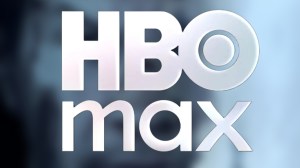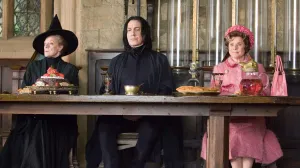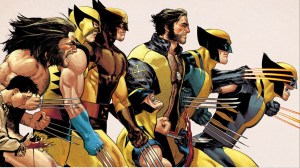
Filmmaker John Carpenter has built an impressive legacy as one of the greatest horror directors of his generation, thanks to films like Halloween, The Fog, and In the Mouth of Madness. In addition to writing and directing many of his films, Carpenter also crafted a majority of their scores, reminding audiences just how many talents the man possesses.
Videos by ComicBook.com
Carpenter fans were ecstatic to learn that the filmmaker was returning to the Halloween franchise with this fall’s sequel, as he serves as the film’s executive producer. Making matters even more exciting was the confirmation from producer Jason Blum that Carpenter would also provide the film with its score, which would be his first musical contribution to the series since Halloween III: Season of the Witch.
Scroll down to see Carpenter’s crowning musical achievements!
‘Assault on Precinct 13’
In Carpenter’s second feature film, a group of police officers and convicts are forced to unite in a dilapidated precinct after gang warfare targets one of the survivors hiding inside. While the narrative might not fit the traditional horror mold, the siege thriller offers plenty of surprises and close calls for our heroes, keeping us on the edge of our seats.
The film’s pulsating themes gave a sense of urgency to the experience, making viewers feel they were in the same countdown to rescue as the characters we were seeing. Making the feat even more impressive is that, due to budgetary constraints, Carpenter recorded the score in one day.
‘Halloween’
Arguably his most iconic horror movie score, and one of the most memorable of all time, Carpenter once again used simple repetitions to heighten to unrelenting nature of Halloween‘s killer.
After escaping from a mental institution, Michael Myers returns to his hometown 15 years after he murdered his older sister on Halloween night. Concealing his identity with a mask, Myers begins picking off the town’s teens on a path to collide with Laurie Strode.
The erratic rhythms of the opening theme and its subsequent use of jarring, high-pitched synthesizers helped set the standard for many horror film scores in the ’80s.
‘Christine’
A nerdy high schooler is mocked by many of his fellow students, but when he sets his sights on a broken down muscle car, he sees the opportunity to restore it to its former glory and become the coolest kid in school. His renovation efforts pay off, though his impressive ride subjects him to more ridicule, with bullies beginning to trash his automobile. The car itself is compelled by a supernatural presence, bringing it to life to seek vengeance on the bullies.
Similar to Assault on Precinct 13, Christine‘s score delivers a driving rhythm (pun intended), forcing listeners to cower in fear of the intense guitar. The focus of the classic car also allows Carpenter to tap into a classic rock n’ roll vibe, embracing electric guitars over pulsating synthesizers.
‘Big Trouble in Little China’
Arguably Carpenter’s most ambitious film, Big Trouble in Little China brought together action, fantasy, martial arts, and comedy into one classic caper. A girl is kidnapped and a truck goes missing deep in the heart of San Francisco’s Chinatown, forcing two friends to seek out the whereabouts of the important items. The duo discovers their journey is just beginning, as they uncover ancient secrets and rituals that motivated the disappearance of what they had treasured.
As ambitious as the film itself, Carpenter broke the mold with his score for the film, combining a variety of musical genres into one album. The film’s most distinctive track, its theme song, featured vocals by Carpenter, with virtually all of his previous scores being comprised solely of instrumentals.
‘Prince of Darkness’
What makes Carpenter’s films so interesting is that he refuses to limit himself to one realm of horror, offering audiences a variety of terrors. In a slight departure from his previous efforts, the filmmaker tackled the world of science and the Devil with Prince of Darkness, resulting in one of his more unsettling scores.
A group of physics students is tasked with uncovering the mysteries of a large vat of green liquid housed in the catacombs of a church, only for Satan himself to begin to influence the students in hopes of bringing about his arrival on earth.
Rather than a series of distinct songs on the score, the overall musical composition creates an underlying sense of unease. The instruments used might sound familiar, though Carpenter brings the instruments together for a sonically disturbing score.
Honorable Mention: ‘The Thing’
Carpenter’s The Thing was a new endeavor for the filmmaker, as it was his first “remake” of a popular horror movie, with the novella Who Goes There? having previously being adapted into the 1951 film The Thing From Another World. Additionally, it’s one of the few movies he directed that he didn’t also craft the score for, with Ennio Morricone composing the music for this 1982 film.
A group of researchers in Antarctica encounter a husky from another research team that transforms into a horrifying beast overnight. The researchers realize that the other research team uncovered an ancient extraterrestrial which can replicate living beings, forcing the team to question which of them may have already been replaced.
The score for The Thing doesn’t technically belong to Carpenter, though it’s one of his most memorable, with the opening theme hinting at the vast emptiness and otherworldly feeling of the film itself.
Another Honorable Mention: ‘Lost Themes’
One reason fans were so excited that Carpenter would create the score for the upcoming Halloween sequel is that he hasn’t created a score for a movie since 2001’s Ghosts of Mars. The filmmaker might not have directed a film since 2010’s The Ward, though he’s kept himself quite busy with the albums Lost Themes and Lost Themes II.
As the titles imply, the songs on each album are could hypothetically serve as themes for films that didn’t exist, though Carpenter claimed one of the joys of recording the albums was that he didn’t have to create music to accompany visuals, edits, or time constraints.
The music might not tie into a film, but the albums offer a great substitute for fans of the filmmaker.








